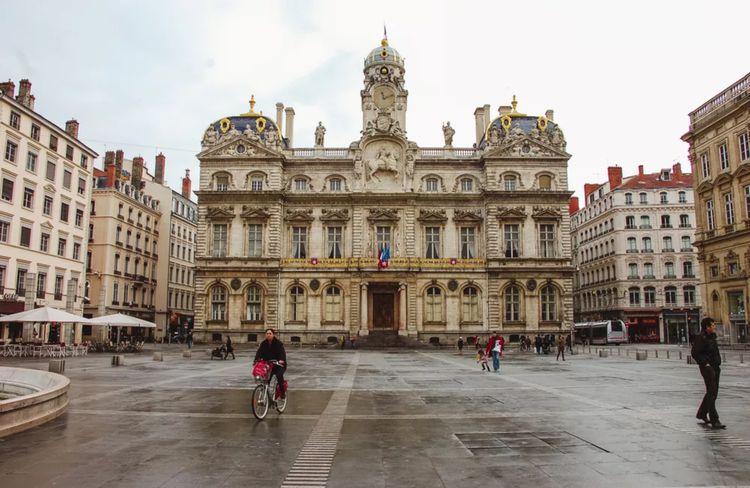Summary of Lyon’s Highlights
- Introduction to Lyon
- Visit the Roman Amphitheater
- Explore Lyon Cathedral
- Enjoy Place Bellecour
- Discover La Croix-Rousse
- Experience Lyon’s Traboules
- Lumière Cinema Museum
- Admire Outdoor Murals
- Dine at Lyon’s Bouchons
- Visit Musée des Confluences
- Festival of Light
- Relax at Parc de la Tête d’Or
- Explore the Riverside of Lyon
Discover Lyon: A Guide to France’s Culinary Capital
The attractive city of Lyon sits between the Rhône and the Saône rivers. France’s second city may be less popular with visitors than other French cities, but Lyon is delightful, with spectacular Roman remains, a history that includes silk weavers, merchants, and traders, and a well-deserved reputation as France’s second city for gourmet restaurants.
Roman Amphitheater
This is where Lyon began—at the Roman city at Fourvière that stands high above Lyon. Two Roman amphitheatres, the forum, and the Musée Gallo Romain, filled with remarkable artifacts from 2,000 years ago, dominate the hill overlooking the city.
Additionally, there is a superb musical festival here every summer, Les Nuits de Fourvière, which in 2018 runs from June 11th to July 30th.
Lyon Cathedral
From Fourvière, you get a fantastic view over Vieux Lyon, which clusters around the Cathédrale St-Jean. Finally completed in 1476 after four centuries of building, the cathedral features many treasures, including a remarkable 14th-century astronomical clock. At certain hours of the day, the clock comes to life, featuring a trumpeter, a conductor leading an imaginary orchestra, and the Archangel Gabriel appearing to the Virgin Mary.
Place Bellecour
Place Bellecour, constructed in the first half of the 17th century, is one of Europe’s largest public squares. It serves as Lyon’s main meeting place and the site for various public events, under the watchful eye of the statue of King Louis XIV. This iconic square is at the heart of Lyon’s main shopping and dining areas.
La Croix-Rousse
The area known as La Croix Rousse is intricately tied to the history and fortunes of Lyon. The silk weavers who shaped the city’s trade and prosperity inhabited the streets of La Croix-Rousse in the 18th century, creating tall houses where they wove the silks that brought wealth to Lyon. Today, this former working-class area is becoming more fashionable, featuring local bistros, shops, markets, and a vibrant neighborhood atmosphere.
Lyon’s Unique Traboules
Lyon is renowned for its “traboules,” secret passageways that connect parallel streets, like those found in rue Juiverie. Stepping through a street doorway reveals a maze of covered alleys that weave past Renaissance courtyards complete with staircases and romantic balconies. Historically, they were utilized during World War II to conceal individuals from German forces. To learn more, visit the Resistance and Deportation History Centre (CHRD), which houses some intense material regarding wartime experiences.
Lumière Cinema Museum
See where cinematic history was made at the Lumière Museum, originally the family home and headquarters of the Lumière company that established the cinema industry. This museum showcases old, beautiful equipment alongside various films, including the grainy first black-and-white film ever created.
Outdoor Murals
This ‘City Library’ mural, located at the corner of Rue de la Platière and the Quai de la Pecherie beside the Saône river, is merely one of many large murals throughout Lyon that captivate passersby.
Eat at Lyon’s Famous Bouchons
Bouchons are the local restaurants of Lyon, typically bustling every night with diners indulging in classic dishes such as pig’s trotters, all complemented by local Rhône wines.
Musée des Confluences
Opened in December 2014, the new Musée des Confluences serves as an ambitious science and anthropology center, exploring the extensive narratives of humanity and featuring impressive architecture.
Festival of Light
Lyon’s annual Festival of Light transforms the buildings across the city into fantastical displays, particularly in the stunning Place des Terreaux, surrounded by cafes and restaurants, and flanked by the Musée des Beaux-Arts and the magnificent Hôtel de Ville. This unmissable event typically occurs in December.
Parc de la Tête d’Or
Don’t overlook the beautiful, expansive Parc de la Tête d’Or, where locals flock during the summer months. This park offers something for everyone: a zoo for children, carousels, peaceful lakes for picnicking, a rose garden, and vibrant flowers.
The Riverside in Lyon
Boat trips along the Rhône and the Saône rivers present a different view of the city, especially at night when the buildings are illuminated, appearing to float on the water.




